I’ve always been fascinated by how holiday legends connect to real people. Did you know Santa Claus has roots in a real person whose remains you can visit in Italy? The bones of Saint Nicholas, the man behind our modern Santa Claus, rest beneath the impressive Basilica di San Nicola in Bari, Italy. Italian sailors brought them there from Turkey in 1087.
When I walked through the basilica, I could barely imagine the wild story behind these relics. The church was built specifically to keep the saint’s remains safe, and Pope Urban II even showed up for its consecration.
It took about ten years to construct, but the grand building we see today wasn’t finished until the mid-1100s.
What really gets me about visiting is how this place ties together ancient Christian devotion with the Christmas traditions we know now.
Most visitors come for the Romanesque architecture, but they’re usually surprised to find themselves standing just a few feet from the remains of the man who inspired Santa Claus.
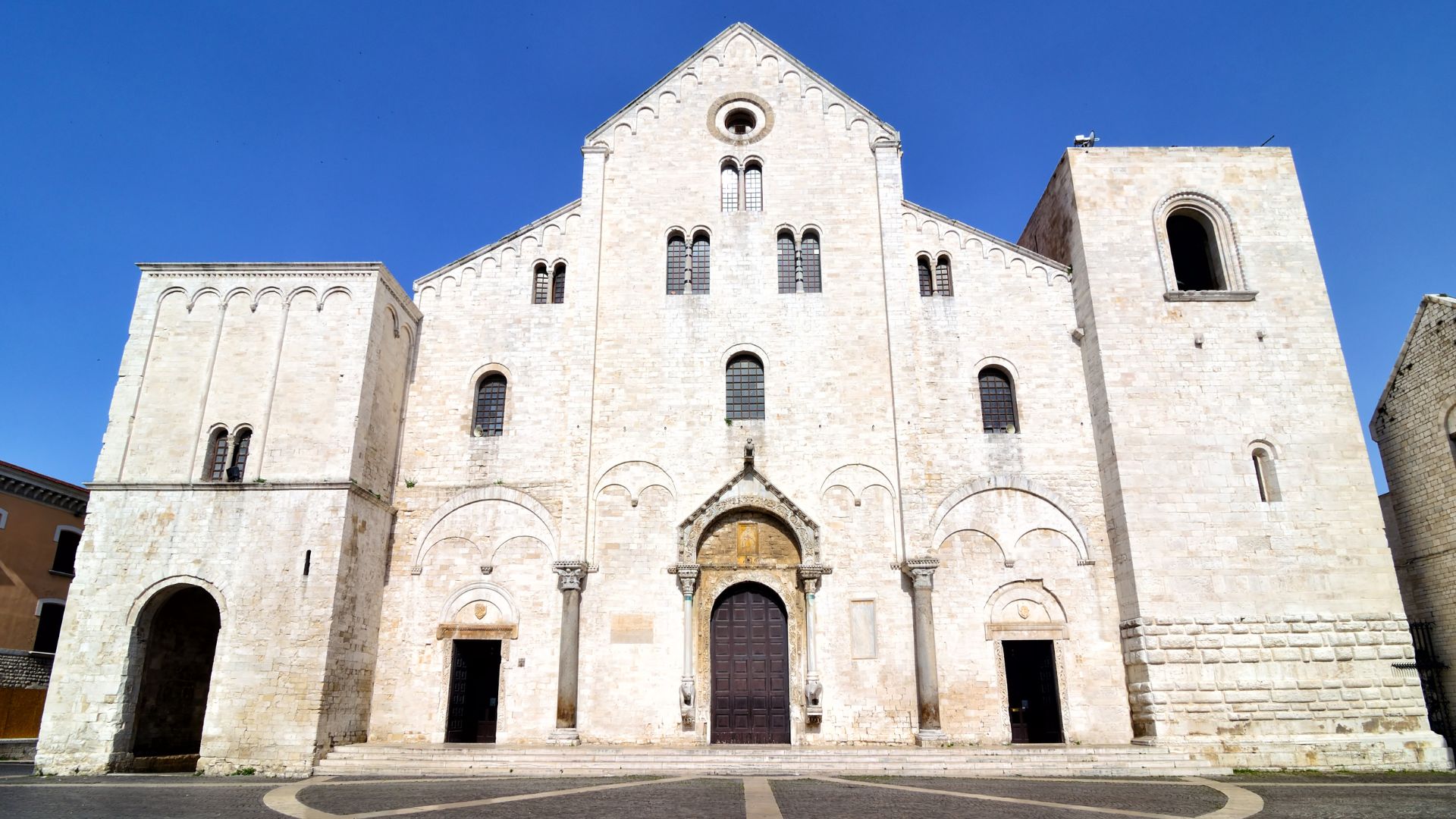
The True Story of St. Nicholas: From Patara to Myra
St. Nicholas’s story starts with a compassionate man whose life took him from Patara to becoming the Bishop of Myra in the 3rd and 4th centuries.
His generosity and faith during tough times helped turn him into the inspiration for gift-giving traditions around the world.
Early Life and Historical Background
Nicholas was born around 270 AD in Patara, a coastal town in what is now Turkey.
It’s honestly wild to think he grew up in a wealthy Greek Christian family when Christianity was still illegal in the Roman Empire.
After his parents died in an epidemic, Nicholas inherited a lot of money. Instead of living rich, he gave his inheritance to help the poor.
That early choice set the tone for the rest of his life.
I found out that Nicholas lived through the Great Persecution under Emperor Diocletian (303-311 AD).
Christians faced prison, torture, and death, but Nicholas stayed strong in his faith, even when it put him in danger.
Bishop of Myra and His Compassionate Life
Nicholas moved to Myra (today’s Demre) and eventually became its bishop.
I’ve walked the same streets where he once cared for his community with real kindness.
His most famous act? Secretly giving gold coins as dowries for three poor sisters.
Without his help, those girls would’ve faced poverty or worse. Nicholas tossed the gold through their window at night to preserve their dignity.
During a famine, Nicholas convinced sailors to leave some grain behind for starving people in Myra.
The sailors were stunned when they reached their destination and saw they hadn’t lost any cargo, even after sharing.
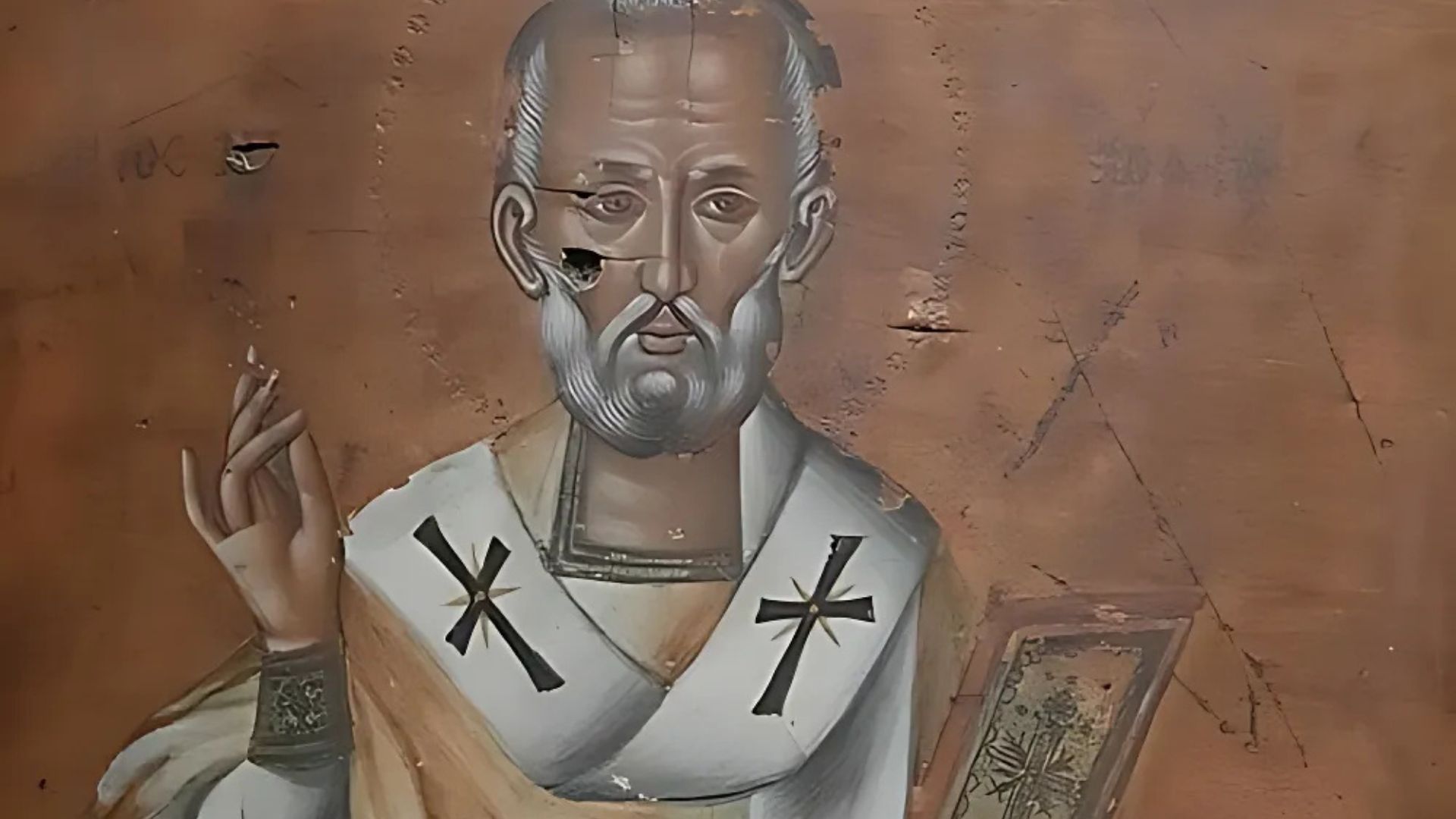
Miracles, Legends, and His Legacy
People called Nicholas a miracle worker, even while he was still alive.
The most dramatic story tells how he saved three innocent men from execution by grabbing the executioner’s sword.
That bold move made him famous as a defender of justice.
There’s also the legend where Nicholas brought three murdered children back to life after an evil innkeeper killed them.
When I visited Myra, locals still told that story with a sense of awe.
Nicholas died on December 6th, 343 AD—his feast day is still celebrated everywhere.
His remains ended up in Bari, Italy, and I’ve watched pilgrims visit his shrine even now.
His compassion for children, sailors, and the falsely accused turned him into one of Christianity’s most beloved saints.
The whole gift-giving Santa Claus tradition? It all goes back to this humble bishop from Myra, whose generosity just never seemed to run out.
Bari and the Basilica di San Nicola: A Pilgrim’s Journey
Bari, a coastal city, holds one of Christianity’s most treasured sites.
Pilgrims have traveled here for centuries to honor Saint Nicholas.
Walking through Bari’s narrow streets toward the basilica, I felt the weight of all those years of devotion.
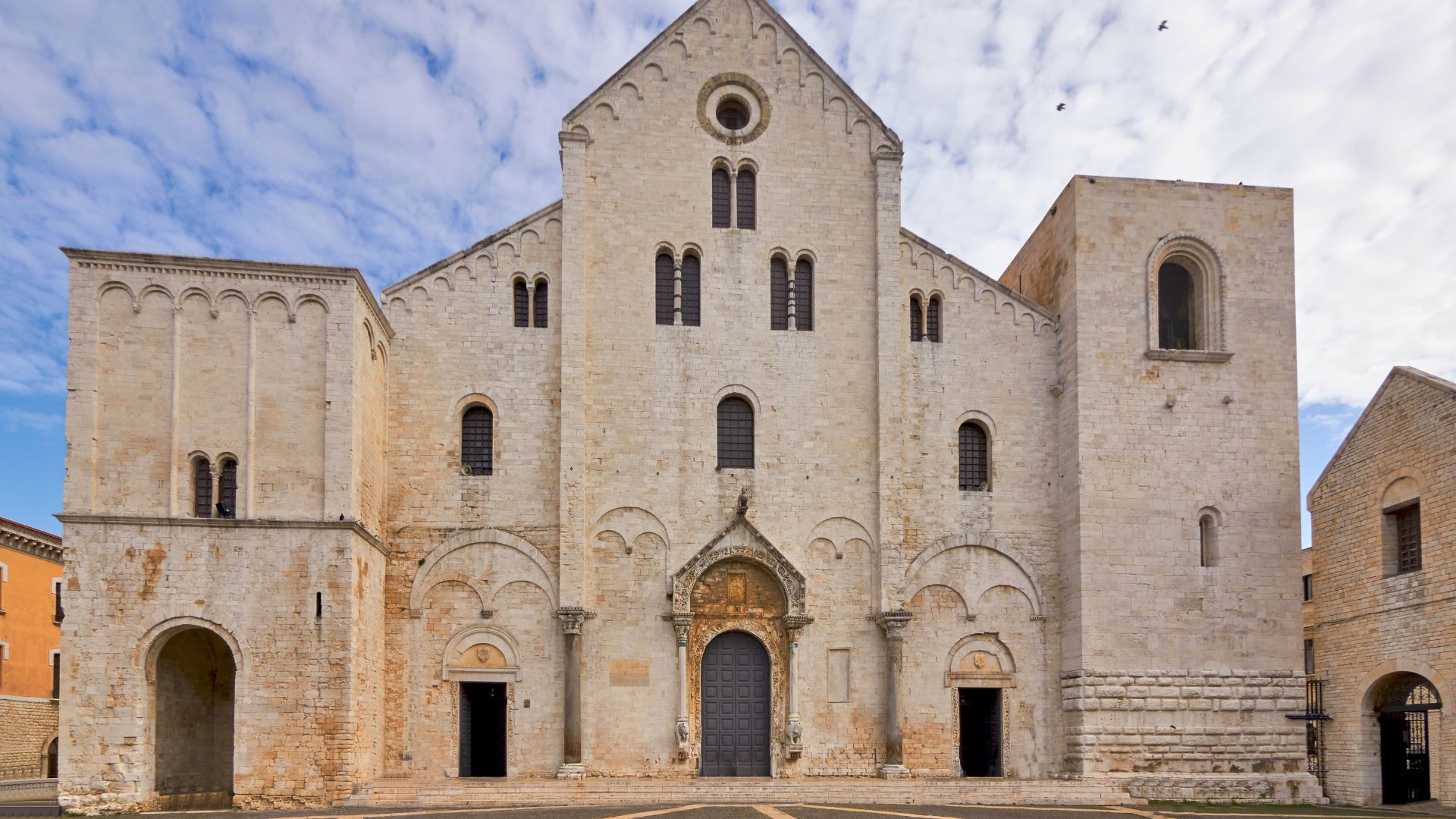
The Translation of Nicholas’ Relics: The Bari Adventure
Back in 1087, sailors from Bari set out on a gutsy mission to Myra, in what’s now Turkey.
They wanted to “rescue” Saint Nicholas’s relics before Turkish forces could destroy them.
These 62 Barese sailors broke into the saint’s tomb and brought his bones back to Bari.
That wild adventure, called the “translation of relics,” changed Bari forever.
The sailors got home on May 9, 1087, and the city still celebrates that date every year with the Festa di San Nicola.
What surprised me was how they stored the relics at first.
Before the basilica existed, Nicholas’s remains stayed temporarily in the Abbey of Saint Benedict.
The city quickly started planning a permanent home worthy of their new treasure.

The Basilica di San Nicola: Architecture, Mosaics, and Sacred Spaces
The Basilica di San Nicola rose in just ten years in its basic form, though the final structure wasn’t finished until the mid-12th century.
When I first walked in, the Romanesque style felt simple but deeply spiritual.
The basilica has three naves, separated by granite columns.
Its holiest spot is the crypt, where Saint Nicholas’s tomb sits under a marble altar.
I watched pilgrims kneeling and gently touching the tomb in prayer.
Some artistic highlights include:
- The Cathedra (Bishop’s Chair) was carved from a single marble block
- Medieval mosaic fragments showing saints and biblical scenes
- Two ornate sarcophagi from the Roman era
The wooden ceiling beams and soft, filtered light make you feel like you’ve traveled back in time.
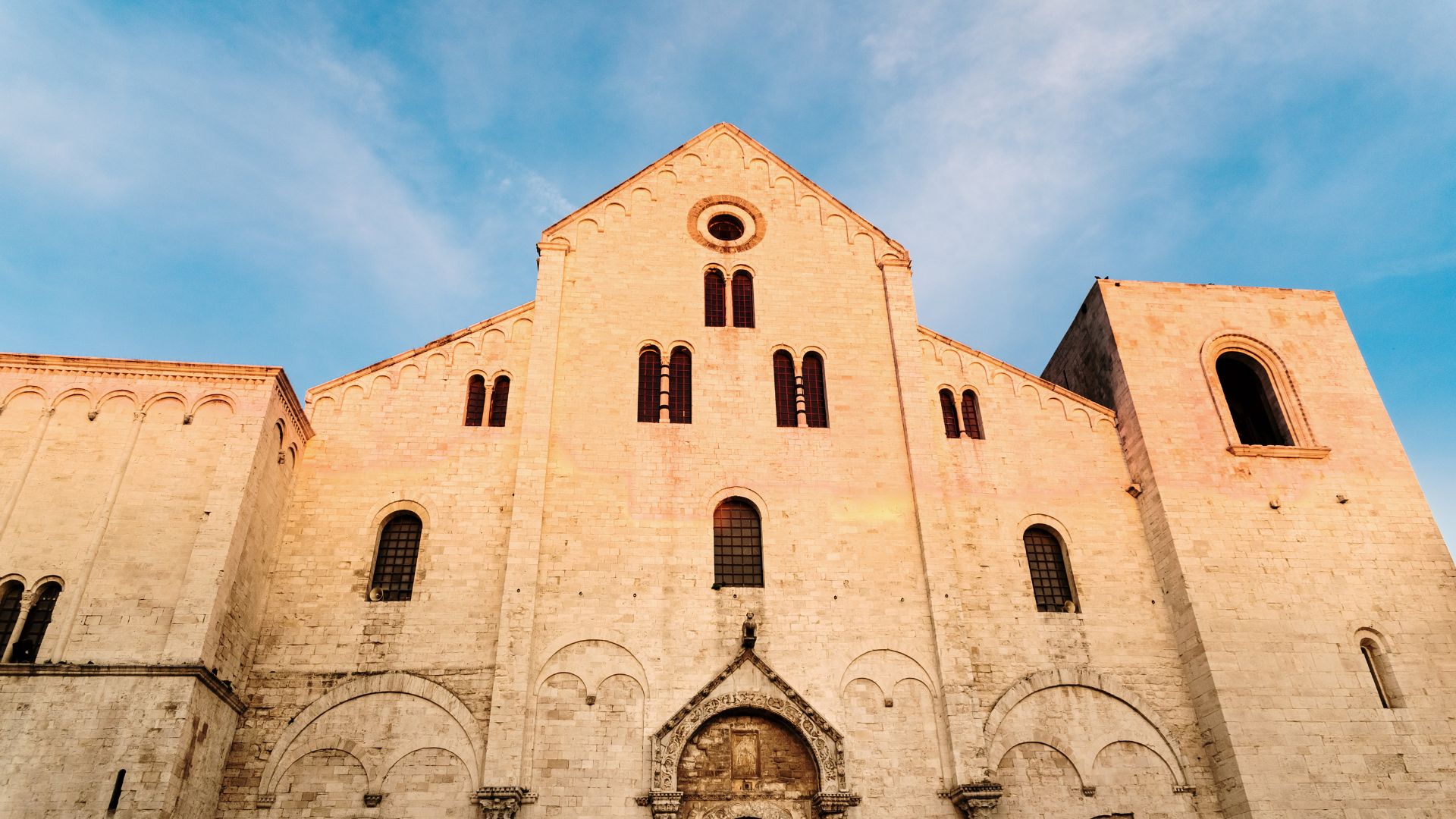
Pilgrimages, Sacred Oil, and Local Devotion
What sets this basilica apart is the “Manna di San Nicola”—a clear liquid that seeps from the saint’s bones.
I watched priests collect this sacred oil, believed to heal, and give it to pilgrims.
The basilica draws people from all over Europe.
During my visit, I met pilgrims from Russia, Greece, and beyond, all coming to honor “Nicholas in Bari.”
Local devotion runs deep in Apulia.
Every May, thousands join processions through Bari’s streets, carrying a statue of Saint Nicholas to the sea to mark his arrival from Myra.
The celebration bursts with parades, traditional music, and feasting.
In Bari’s old town, shops sell Saint Nicholas mementos everywhere, showing just how much he’s part of daily life here.

St. Nicholas as Protector: Children, Sailors, and the Needy
Bishop Nicholas of Myra became famous across the Mediterranean for his compassion and miraculous help.
Stories about his generosity in desperate situations spread quickly.
The Patron Saint of Children and the Miracle of the Dowries
One of the most well-known stories explains why St. Nicholas became the patron saint of children.
In Myra, a poor man had three daughters but no money for dowries. Without dowries, the girls faced a grim future.
Nicholas heard about it and decided to help.
At night, he tossed bags of gold through their window on three different occasions.
Some versions say he dropped the gold down the chimney, where it landed in stockings drying by the fire.
This secret gift-giving saved the daughters and made Nicholas a protector of children and young people.
His feast day, December 6th, became linked to giving gifts, especially to kids.
Guardian of Sailors, Merchants, and Travelers
St. Nicholas became the patron saint of sailors thanks to stories of miracles at sea.
He reportedly calmed stormy waters during a voyage to Alexandria, saving everyone aboard.
In another story, sailors caught in a storm prayed to Nicholas.
He appeared on their ship and led them safely to port.
Word of this miracle spread among sailors all over the Mediterranean.
His protection also covered merchants and travelers.
Churches dedicated to St. Nicholas often popped up in port cities, where sailors prayed for safe journeys.
He became one of Europe’s most beloved saints for anyone facing dangerous travel.
Legends of Miracles, Compassion, and Generosity
Nicholas’s life inspired countless stories of miraculous help.
During a terrible famine, he convinced ships to leave grain for starving people in Myra.
When the ships reached their destination, their cargo hadn’t shrunk at all.
One of the most dramatic legends tells how Nicholas brought three murdered children back to life after an evil butcher killed them.
This miracle cemented his reputation as a protector of the innocent.
Nicholas didn’t just do grand gestures.
He regularly gave food and necessities to the needy, often anonymously.
The thread running through all these stories is his practical compassion.
Nicholas didn’t just pray for people—he took action to protect children, sailors, and anyone in trouble.
From Saint to Santa Claus: Global Traditions and Celebrations
St. Nicholas’s journey from bishop to the Santa we know today covers continents and centuries.
His story evolved through traditions that still bring joy to so many families.
St. Nicholas Day and European Customs
In much of Europe, December 6th is St. Nicholas Day.
Kids put their shoes or boots by the door or fireplace the night before.
I’ve seen Dutch children’s eyes light up when they find chocolate coins and small toys in their shoes—gifts from Sinterklaas!
In Germany and Austria, St. Nicholas shows up in a bishop’s robes, with a staff and a book listing children’s behavior.
He’s often joined by Krampus, a scary figure who warns naughty kids.
In Italy, especially near Bari, the celebration includes special masses and processions for San Nicola.
Children write letters to him, asking for gifts and blessings.
The Transformation into Santa Claus and Kris Kringle
Dutch settlers brought Sinterklaas to America, and the name slowly became “Santa Claus.”
The American Santa swapped his bishop’s robes for a red suit and a round, jolly look.
Thomas Nast, the 19th-century cartoonist, helped shape Santa’s image with his Harper’s Weekly illustrations.
His drawings from 1863 gave us the white beard, round belly, and joyful face we all know.
Kris Kringle, another Santa name, comes from the German “Christkindl” or Christ Child.
Pennsylvania Dutch settlers brought this tradition, and it blended with Santa Claus in the U.S.
Coca-Cola’s 1930s ads, showing Santa in a red suit, locked in his look for good.
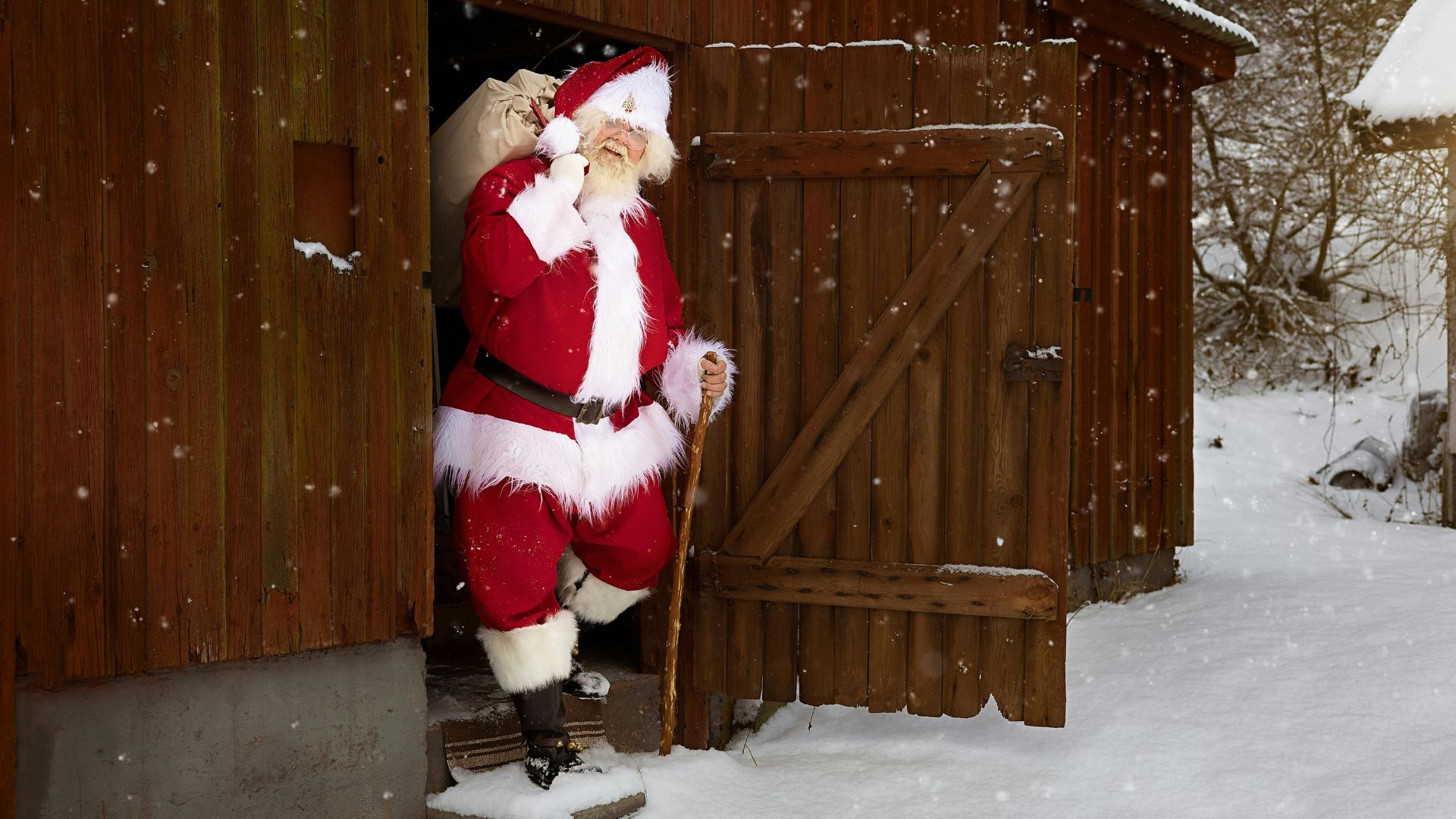
Gift-Giving, Stockings, and Christmas Joy
The Christmas stocking tradition comes straight from St. Nicholas’ legends.
One story tells of Nicholas tossing gold coins down a chimney, where they landed in stockings hung to dry.
I love seeing kids hang their stockings on Christmas Eve, keeping a tradition that’s lasted centuries.
Families often put oranges in stockings today, symbolizing the gold Nicholas gave to the poor.
Gift-giving grew beyond stockings as St. Nicholas traditions blended with Christmas.
In many homes, presents appear overnight, just like Nicholas’s secret gifts.
Now, Santa delivers gifts worldwide on Christmas Eve, riding a sleigh pulled by reindeer.
It’s a long way from the bishop who rode a donkey through Myra!

The Worldwide Reach: Legends, Pilgrimages, and Influence
St. Nicholas’s story stretches far beyond Bari.
His legacy inspires pilgrimages, shapes traditions, and connects people across the world even now.
St. Nicholas Across the Mediterranean: Greece, Turkey, and Venice
St. Nicholas’s story starts in what’s now Turkey, where he served as Bishop of Myra. When I wandered through the ancient ruins in Myra, I felt a strange mix of history and legend swirling around me.
After his death in the 4th century, people all over the Mediterranean quickly picked up on his story. His influence just seemed to spread like wildfire.
In Greece, I kept spotting Orthodox churches dedicated to him. The Greeks call him “Nikolaos the Wonderworker” because of his generosity and all those miracles people whisper about.
Venice claims some of Nicholas’s relics, too, which honestly surprised me. I saw firsthand how the Venetians honor him, right alongside Bari.
During times of religious and political upheaval—especially when the Seljuk Turks arrived—sailors and merchants carried his stories everywhere. You’ll find his devotion scattered through Mediterranean ports, tucked into the corners of old cities.
The Saint’s Journey Through Europe: Germany, The Netherlands, Switzerland, and More
In Germany, I stumbled into St. Nicholas traditions that go back forever. December 6th still feels like a big deal—kids leave out their shoes, hoping for treats.
The Dutch took “Sinterklaas” to America and, well, that’s how we got Santa Claus. In Belgium and the Netherlands, the tradition just feels woven into everyday life.
Switzerland and Austria have these beautiful little mountain churches for the saint. When I made it to Lorraine in France, people there told me Nicholas is their patron saint, and honestly, they seemed pretty proud of it.
Russia embraced Nicholas—he’s one of their most venerated saints. I couldn’t help but linger over the elaborate icons of him in Russian Orthodox churches; they’re just stunning.
Modern-Day Pilgrimages and Santa’s Church Today
Every year, I join thousands of pilgrims heading to Bari’s Basilica of St. Nicholas.
May 9th rolls around, and the city fills up for the feast that celebrates when his relics arrived back in 1087. People from both Orthodox and Catholic traditions show up, and honestly, it’s a pretty amazing mix.
Scholars and travelers show up too, eager to dig into the history of a site that’s been buzzing for over 900 years.
When I stepped into the underground crypt, I caught Orthodox pilgrims singing hymns right next to Catholic visitors. That kind of unity? It’s rare.
The church in Bari still feels like a living link to the real man behind Santa Claus.
I’ve talked with devotees from all over the world who make the journey, no matter which Christian denomination they belong to.
Modern pilgrims come looking for spiritual connection or just a sense of history. Somehow, St. Nicholas keeps bringing people together—even now.

